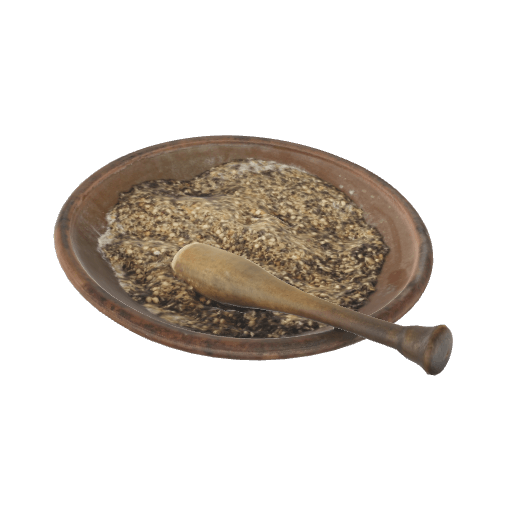Mortar and pestle
A mortar is a container in which a solid, dry substance, such as grain or herbs, is placed to be ground into a powder by the pestle.
Mortars can be made of different materials such as cast iron, copper, wood, iron, or ceramic. Copper mortars are mainly used in the pharmaceutical industry for medicinal products. This mortar is made of stoneware and shaped with a potter’s wheel. The throwing technique involves a turning wheel which allows the shaping of circular ceramic pieces.
However, in order to grind cereals in large quantities and produce flour, one would have to go to the lord’s mill, where the miller would do the work. In the area, the cultivated cereals are wheat, oats, buckwheat, rye, barley, and corn. The mill is powered by water or wind, turning large millstones to produce flour.
The construction and maintenance of a mill is the privilege of the seigneur (lord) and, to some extent, their obligation. The mill is at the disposition of the tenants, who do not have the right to compete with the seigneur. The first mill of Rimouski is located on the Boucher stream and the second, on the Fausse-Molière stream (La Liberté or Germain-Roy).
References
Date: 19th century
Origin: North America
Owner: Site historique de la maison Lamontagne.
Sources:
Imreh-Rasonyi, L. (1983). La céramique québécoise ancienne [Ancient Quebec’s pottery]. Ministère des Affaires culturelles. https://numerique.banq.qc.ca/patrimoine/details/52327/2096592
Chassé, B. (2003). Rimouski et son île; Les seigneurs Lepage; l’île Saint-Barnabé [Rimouski and its island; the Lepage lords; St. Barnabas island] (Les cahiers de l’Estuaire, vol. 3). Société d’histoire du Bas-Saint-Laurent; GRIDEQ.
